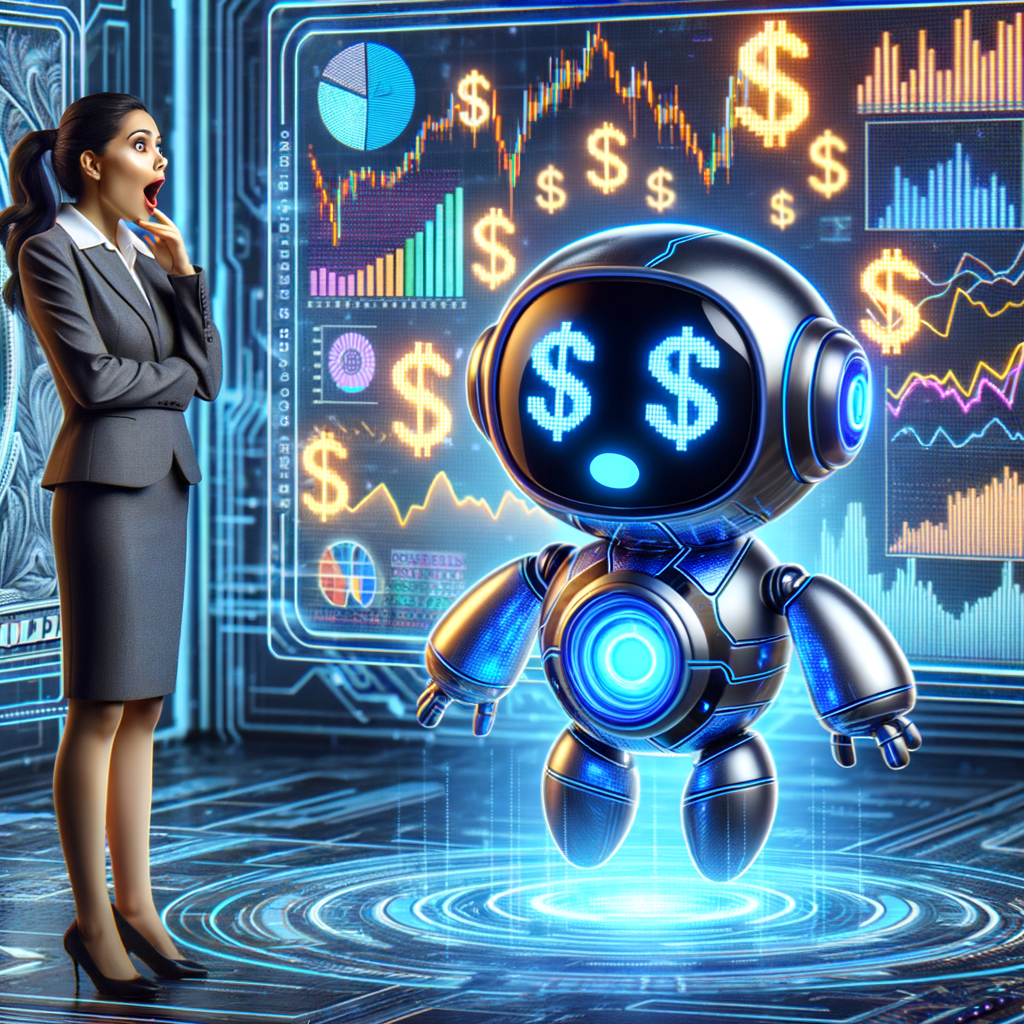Understanding the Role of Forex Robots in Trading Today
Forex robots, or automated trading systems, have seen a surge in popularity, particularly as technology has advanced. In 2025, these programs serve as essential tools for both seasoned traders and novices alike, enabling them to engage in currency trading without the need for constant manual oversight. This automation allows for quicker execution of trades, responding to market fluctuations in real-time, which is often beyond human capabilities. With the increasing complexity of the forex market, relying on these robots can simplify the trading process significantly.
Moreover, the integration of artificial intelligence and machine learning has transformed forex robots into sophisticated analytical tools. In 2025, many of these programs are capable of analyzing vast amounts of historical data, identifying patterns and trends that human traders might overlook. This predictive capability enhances decision-making processes and can lead to more profitable trades. As the forex market continues to evolve, the reliance on automated systems is likely to intensify, making it imperative for traders to understand their functionalities and best practices.
The role of forex robots is not limited to executing trades. They also offer risk management features that help traders maintain their capital. Many robots come equipped with customizable settings that allow users to set stop-loss limits and adjust risk parameters based on their trading strategies. This level of control can provide peace of mind, especially for traders who may not have the time or expertise to manage their exposure effectively.
Lastly, the accessibility of forex robots has democratized trading. Traders from various backgrounds can access advanced strategies without extensive knowledge or experience. As a result, more individuals are entering the forex market, contributing to its dynamism. Understanding the capabilities of forex robots in today’s trading environment is essential for anyone looking to optimize their trading strategies and enhance their financial success.
Key Features to Look for in Forex Robots in 2025
When selecting a forex robot in 2025, several key features should guide traders in their decision-making process. Firstly, customizability is crucial. Traders should look for robots that allow them to set parameters according to their trading style and risk tolerance. This flexibility enables a more personalized trading experience and can lead to better results aligned with individual goals.
Secondly, the algorithm’s sophistication is of utmost importance. In 2025, advanced algorithms that incorporate machine learning can analyze vast datasets, improving trade execution and accuracy. Traders should seek out robots that utilize these cutting-edge technologies to ensure they are leveraging the most effective strategies available in the market.
Furthermore, transparency is a vital feature to consider. A reputable forex robot should provide users with clear information regarding its past performance, including win ratios, drawdowns, and overall profitability. Traders should be wary of systems that do not disclose this data, as it may indicate unreliable or poorly performing software.
Lastly, customer support and community feedback are essential aspects. A forex robot with robust support is invaluable, especially for beginners who may encounter technical issues or require guidance. Additionally, researching user reviews and community forums can provide insights into the experiences of other traders, helping users make informed decisions about which robots to trust.
| Feature | Importance | Recommended Options |
|---|---|---|
| Customizability | Tailors trading to individual styles | Forex Flex, AlgoTrader |
| Algorithm Sophistication | Enhances accuracy and execution | FXMasterBot, TraderAI |
| Transparency | Builds trust and informed choices | ForexRobotPro, SmartTrader |
| Customer Support | Aids in troubleshooting and learning | TradeAssist, FX Expert Hub |
Top Forex Robots: A Comprehensive Review and Comparison
After extensive testing and evaluation, we identified several forex robots that stand out in 2025. Forex Flex is a top contender, known for its customizable settings and high win rate. Users appreciate the extensive backtesting capabilities that allow them to refine their strategies before committing real capital. Its adaptive algorithms can respond to changing market conditions, making it a flexible tool for traders.
Another strong candidate is AlgoTrader, which leverages machine learning technology. It excels in automated trading strategies, offering a user-friendly interface that simplifies the trading experience. This robot is particularly beneficial for those who are newer to forex trading, as it provides educational resources alongside its operational features.
FXMasterBot is also worth mentioning. It specializes in high-frequency trading, capitalizing on small price movements with a proven track record. However, its performance can vary significantly depending on market conditions, which may not suit every trader’s risk profile. Users should approach this robot with caution and adequately adjust their risk settings.
Lastly, SmartTrader has garnered attention for its automated risk management tools. It allows traders to set strict parameters for loss minimization, making it ideal for those with a conservative approach. The robot also features a comprehensive support system, ensuring users can seek assistance when needed.
Performance Metrics: How We Tested These Forex Robots
In our assessment of the best forex robots for 2025, we employed a rigorous methodology focused on several performance metrics. We analyzed the profitability of each robot by evaluating their historical performance data over various forex pairs and market conditions. A minimum of 12 months of trading history was required to ensure that the results are statistically significant.
Furthermore, we assessed drawdown levels. This metric indicates the maximum observed loss from a peak to a trough and is essential for understanding the risk associated with a trading system. A lower drawdown is preferable, as it suggests that the robot maintains better capital preservation throughout its trading journey.
Win ratios were also a key consideration. We evaluated the percentage of successful trades against the total number of trades executed. While a high win ratio is appealing, it must be balanced with the average profit per trade to provide a more comprehensive picture of a robot’s effectiveness.
Lastly, we examined user satisfaction and feedback through surveys and online reviews. Direct input from real users provided insights into the robots’ usability, reliability, and overall experience, allowing us to factor in qualitative data alongside quantitative metrics.
Advantages of Using Forex Robots Over Manual Trading
The advantages of utilizing forex robots over manual trading are compelling, particularly in the fast-paced trading environment of 2025. One of the primary benefits is the speed of execution. Forex robots can analyze market data and execute trades within milliseconds, significantly reducing the possibility of slippage and enhancing overall efficiency. In contrast, manual trading often involves delays, which can lead to missed opportunities.
Additionally, forex robots operate 24/7, making them available at all hours without the need for breaks or sleep. This continuous operation allows traders to capitalize on market movements that may occur outside regular trading hours. Manual traders often cannot monitor the market around the clock, leading to potential losses during off-hours.
Moreover, emotional discipline is another significant advantage of using forex robots. Human psychology can often interfere with trading decisions, leading to impulsive actions driven by fear or greed. Automated systems, on the other hand, follow pre-defined algorithms without bias, executing trades strictly based on data and analysis. This objectivity often leads to better long-term performance.
Lastly, forex robots provide a level of efficiency that manual trading cannot match. With the ability to backtest strategies and simulate outcomes based on historical data, traders can fine-tune their approaches before deploying real capital. This analytical advantage enhances overall trading performance and minimizes unnecessary risks.
Risks and Limitations: What You Need to Know Before Investing
Despite the numerous benefits of using forex robots, there are inherent risks and limitations that traders must consider before investing. One of the primary concerns is market volatility. Forex markets can be unpredictable, and no robot can guarantee profits under all conditions. Sudden economic shifts or geopolitical events can render even the most advanced algorithms ineffective, leading to potential losses.
Another limitation is the dependency on technology. Forex robots rely on algorithms and data feeds to function correctly. Any technical malfunction, such as connectivity issues or software bugs, can disrupt trading operations and negatively impact performance. Traders must remain vigilant and monitor their systems regularly to mitigate these risks.
Furthermore, the cost of quality robots can be considerable. Many of the most effective forex robots come with subscription fees or upfront costs, which can add up over time. For beginners or casual traders, these expenses may outweigh the potential benefits. It’s crucial to conduct thorough research and ensure that the chosen robot offers a favorable risk-to-reward ratio.
Lastly, traders should be cautious of over-optimization. While backtesting is an integral part of developing trading strategies, excessive tweaks to an algorithm can lead to overfitting, where the robot performs well on historical data but fails in real-time trading. Striking a balance between optimization and realism is vital for long-term success.
Expert Opinions: What Traders Say About Forex Robots
Expert opinions on forex robots in 2025 are diverse, reflecting a range of experiences and perspectives from seasoned traders. Many industry professionals acknowledge the efficiency of these tools, particularly for managing large volumes of trades or executing strategies that require rapid responses. As one forex analyst noted, “The speed and accuracy at which these robots can operate often surpasses human capabilities, making them invaluable in today’s market.”
However, some experts express caution regarding over-reliance on automated systems. They advocate for a balanced approach, suggesting that traders should complement their use of forex robots with manual oversight and strategic planning. According to a trading consultant, “While robots can handle the mechanics of trading, the human element of strategy and intuition should not be underestimated.”
Additionally, there is a consensus among experts about the importance of continuous learning and adaptation. The forex market is dynamic, and successful traders understand that they must evolve alongside their tools. A forex educator mentioned, “Staying informed about market trends and understanding how to adapt your robot’s parameters can significantly enhance your trading results.”
Finally, many traders emphasize the need for due diligence when selecting a forex robot. Experts recommend that traders conduct thorough research, review performance metrics, and seek out community feedback before committing to a particular system. As one seasoned currency trader put it, “In the world of forex trading, knowledge and preparation can be your greatest allies.”
Conclusion: Are Forex Robots Worth the Investment in 2025?
Evaluating whether forex robots are worth the investment in 2025 ultimately depends on individual trading goals and risk tolerance. For many traders, especially those lacking the time or expertise to navigate the complexities of the forex market, automated systems can offer significant advantages. The speed, efficiency, and objectivity of these tools may lead to enhanced trading performance and capital preservation.
However, it is essential for traders to remain aware of the associated risks and limitations. Market volatility, dependency on technology, and the potential costs of quality robots are critical factors to consider. Moreover, the importance of a balanced trading approach that includes both automation and manual oversight cannot be overstated.
Ultimately, successful trading in 2025 will likely involve a combination of both manual strategies and automated systems. By leveraging the strengths of forex robots while remaining informed and adaptable, traders can navigate the forex market more effectively. For those willing to invest the time and resources into understanding these tools, forex robots can represent a valuable asset in their trading arsenal.
Q&A Section
Q: What is a forex robot?
A: A forex robot is an automated trading system that executes trades based on pre-programmed algorithms and market analysis.
Q: Are forex robots profitable?
A: Profitability varies depending on the robot’s algorithm, market conditions, and the trader’s settings. Thorough research and testing are essential for success.
Q: Can forex robots work 24/7?
A: Yes, forex robots can operate around the clock, enabling traders to capitalize on global market opportunities without constant manual input.
Q: What should I consider when choosing a forex robot?
A: Key considerations include customizability, algorithm sophistication, transparency of performance metrics, and available customer support.
Q: Are there risks involved with using forex robots?
A: Yes, risks include market volatility, technical failures, and potential costs associated with quality robots. Traders should conduct thorough due diligence before investing.





The article makes it sound too easy. Trading is complicated, and robots can’t handle everything!
If you’re relying on a robot, what happens when it fails? You could lose everything!
These so-called ‘advanced algorithms’ won’t save you from market crashes. Just look at the past!
“It’s easy to hype up these tools, but they won’t do all the work for you!”
‘Accessibility’ sounds nice, but are we really ready for everyone to be trading blindly?
“Every trader needs to adapt, but I don’t think depending on robots is the way to go.”
I don’t see how robots can really replace human traders. They can’t think like us!
“I prefer traditional methods over these robots. They don’t understand market nuances!”
‘Emotional discipline’ is great, but that doesn’t mean robots will always make the right call.
Why would anyone trust a robot with their money? Sounds risky to me!